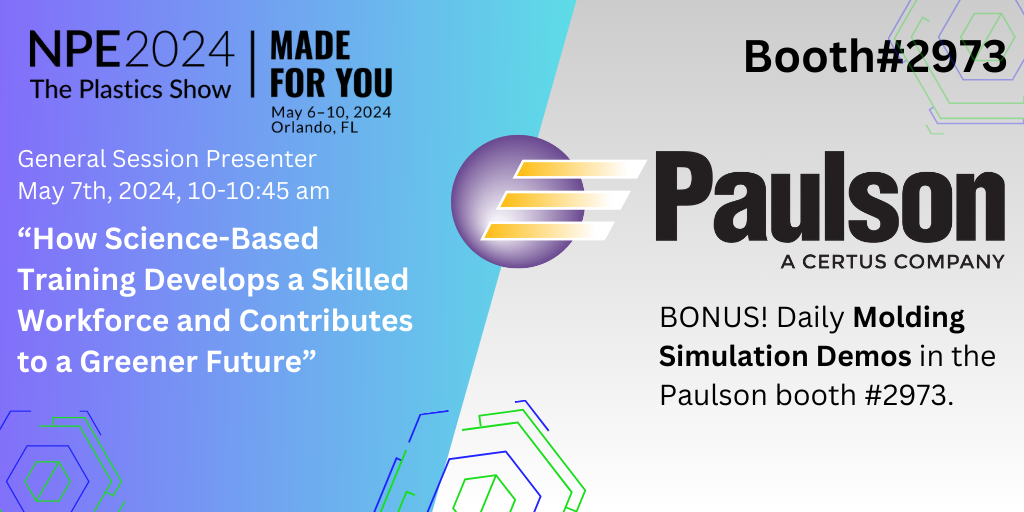 In the November 2012 issue of Plastics Technology magazine, there was an excellent article by Kip Doyle in their “Know How” column (John Bozzelli took a well deserved month off). The title of the article was The Top 10 Reasons Why Molders Fail at Implementing ‘Scientific Molding’.
In the November 2012 issue of Plastics Technology magazine, there was an excellent article by Kip Doyle in their “Know How” column (John Bozzelli took a well deserved month off). The title of the article was The Top 10 Reasons Why Molders Fail at Implementing ‘Scientific Molding’.
I know this article was right on the money because virtually every one of the 10 reasons Mr. Doyle gives, we’ve heard here at Paulson. In many cases, we get calls from customers that are trying to get their employees trained the proper way (that would be “from the plastics point of view”) and are not happy with their results. So we get that fixed for them.
When I was a young man of about 15 or 16 back in the mid ’70’s, my father (Don Paulson) needed some help making overheads for the injection molding seminars he had been giving for several years. Although his main business was Control Process, Inc. which he started with, in his words, “my best student” (Rod Groleau), he also gave seminars on a regular basis. And here’s a little insider info… he would regularly make seminar attendees “flow” through the door and “orient” as they filled the “room”. That’s thinking like a plastic molecule.
The overheads I made had common themes – “4 variables” and “from the plastics point of view”. I was curious about this and asked him what exactly was I helping him do. He proceeded to explain to me that plastics only know 4 variables – heat, pressure, flow and cooling. That was simple enough. Then he went into full-bore teaching mode and started talking about the various controls on the injection molding machine. That’s where he lost me.
“But I’ll always remember him telling me that if I could figure out how to build an injection molding machine that had only 4 controls labeled heat, pressure, flow and cooling, I could become very rich.”
I stuck with model airplanes.
“Scientific Molding” is a comprehensive framework for approaching the molding process from the plastics point of view. It has been widely adopted, as Mr. Doyle points out. But it is no panacea. It can fail in any given company. I would probably rank Kip’s top 10 differently, but the bottom line is there has to be 2 main things in place before your scientific molding efforts ever have a chance of succeeding.
First, buy-in from the top down that everyone on your team is going to be committed to it.
Second, proper depth of knowledge about injection molding (those 4 variables) and an ability to put one’s self in the plastic molecule’s place.
Ironically, those 2 points are numbers 1 and 10 in the article. They are the bookends of successful scientific molding.
If your company has the committment and your people have the knowledge, your chances of success grow exponentially.


